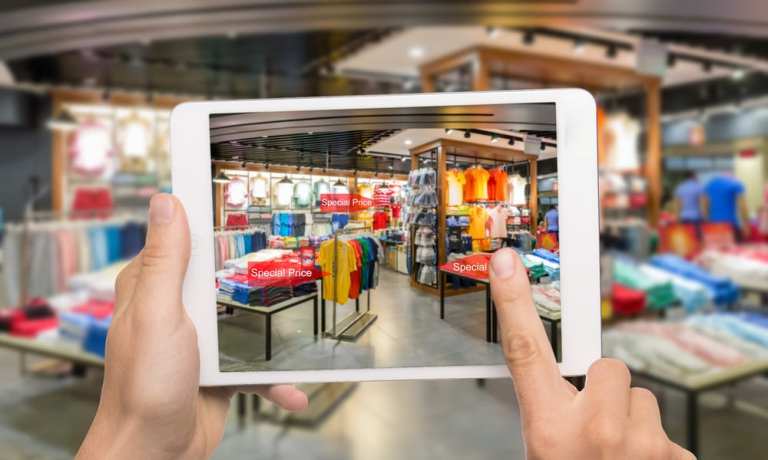Most eCommerce shopping tools and sites that have seen usage surge during the pandemic have never been stressed to this extent. Consumers have shopped online, via mobile devices and at brick-and-mortar stores in various capacities for years, but the pandemic is dramatically expanding the connections between these channels.
eCommerce and mobile shopping have experienced meteoric rises since the pandemic’s onset, with PYMNTS’ research revealing that consumers’ continuing digital shift could generate $158 billion in online sales that would have been made at brick-and-mortar stores prior to the health crisis. It also found that 42 percent of consumers are tapping digital channels for their routine purchasing activities more often than they did before the pandemic, while 17.2 percent of respondents in an early March survey said they were using their mobile devices to shop more often.
These moves seem logical for consumers who have been barred from visiting brick-and- mortar retailers or who are wary of contact with cashiers or payment terminals due to the potential for viral transmission, but they are also likely to have a dramatic impact on the future of digital and in-store commerce. Some studies illustrate that consumers are using their smartphones to do more than just browse mobile-optimized sites and make purchases — they are tapping these devices to virtually “try on” products and more deeply interact with their favorite merchants. Still others are leveraging their mobile phones for innovative payment methods in brick-and-mortar stores, such as QR codes and other contactless payment options.
The eCommerce exodus has altered how consumers balance their desires to shop in physical stores and online as well as which tools and payment methods they use when finalizing these transactions. Consumers’ expectations regarding merchant interaction and support have also shifted to mirror their pandemic-driven payment preferences. The following Deep Dive explores these changes, how they are pushing retailers toward offering omnichannel experiences and what this means for the future of commerce.
The rise of omnichannel
Advertisement: Scroll to Continue
The pandemic’s most noticeable impact on general commerce has been its acceleration of consumers’ migration toward digital shopping. Overall digital sales jumped more than 31 percent in a three-month period, according to one recent study, with American consumers spending $211.5 billion online in Q2 2020. This means eCommerce now accounts for 16.1 percent of overall sales in the U.S., including necessary purchases such as paper goods and groceries. The smooth experiences eCommerce offers are also beginning to broadly affect what consumers expect when they make purchases on other channels. Shoppers now seek seamless in-store experiences that mirror their digital interactions and they likewise expect eCommerce marketplaces to match the aisle-browsing and product-sampling features they find valuable to their brick-and-mortar shopping excursions.
These trends have prompted many retailers to provide features that combine the best of both worlds. Virtual product-sampling options now play a central role in beauty retailers’ sales strategies. Providing features that enable customers to sample lip shades has led to 2.5 times more consumer conversions for brands such as Estée Lauder, for example. Cosmetics retailers Sephora and Ulta Beauty are also relying more on online as well as in-store virtual try-on experiences during the pandemic. Providing customized experiences to consumers requires offering them the services they want through the channels they prefer, and this often means tailoring them to one device in particular — the smartphone.
The mobile linchpin
Smartphones are uniquely suited to supporting the marriage between digital and brick-and-mortar commerce as mobile devices are responsible for innovatively connecting consumers with merchants. Services that further meld the online and brick-and-mortar shopping worlds, such as online ordering and curbside pickup solutions, are also seeing jumps in adoption among several retail categories, partly due to their implementation of mobile-based offerings and payment methods. Coffee chain Starbucks is now offering curbside pickup at more than 1,000 U.S. locations, for example, and its mobile app relies on QR code payments, which have seen increased interest among the nation’s consumers since the pandemic’s onset.
Large-scale retailers Target and Walmart have also reported skyrocketing curbside pickup figures that have likely been buoyed by mobile technologies, with Target seeing a 730 percent year-over-year increase in such sales. Usage of Target’s Shipt mobile delivery app trailed curbside pickup expansion but still witnessed 350 percent growth in the last quarter. Another study found that shopping app downloads in the U.S. reached 14.4 million in early April — a 20 percent increase compared to January. Mobile applications are also behind home try-on features, with some retailers utilizing social media applications to encourage tech-savvy consumers to virtually engage with their brands.
There are many ways in which mobile has helped link digital and in-store commerce, and these developments reveal a fundamental shift in how consumers as well as merchants conceive of and engage in commerce. The traditional separation between brick-and-mortar stores, online retailers and mobile applications is thinning, and many signs indicate that consumers will expect seamless omnichannel experiences once the pandemic ends. Merchants, as well as their payment partners, must work swiftly to ensure they can meet these expectations.

